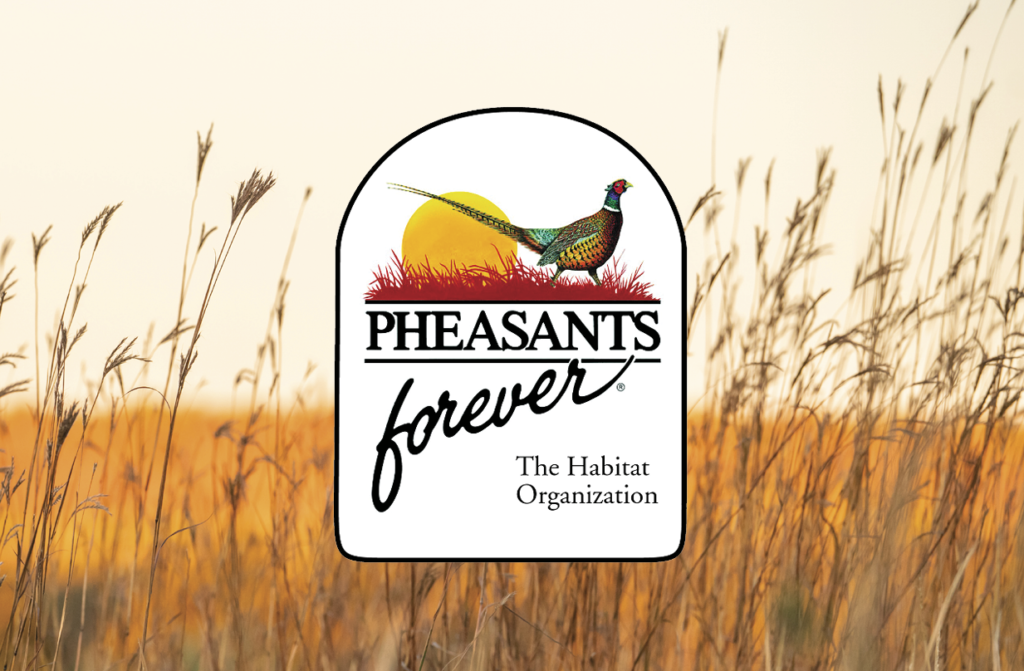TOP 5 TIPS FOR PUBLIC LAND UPLAND HUNTING

By Matt Kucharski
At least a couple of times a year I volunteer at various outdoor sporting events to help Quail Forever and Pheasants Forever recruit new members and renew existing memberships. It gives me a chance to hear what’s on the minds of our most important constituency, and let’s face it, who doesn’t want to spend a few hours talking about birds, dogs and the outdoors with like-minded folk?
When people hear that I lead the National Board of Quail Forever and Pheasants Forever, the comment I most often get is “man, with your connections, you must have some great private land honey holes to hunt.”
Nope. In fact, I do nearly all of my hunting on public lands – and I rarely come home from a hunt empty handed.
Sure, I have a couple of landowners I’ve come to know over the years who allow me access on occasion, but like most of our members I can’t afford my own 2,000-acre private sanctuary or spend hundreds of dollars a day at a high-end lodge. Instead, I take advantage of all of the great public hunting opportunities we have in front of us.
But it takes some work, and it takes a little bit of education, so here are five tips that I try to follow to improve my success when hunting on public lands.
1. READ THE REPORTS
Nesting and cover conditions can vary widely – even within the same state. One farmer I talked to this year said it’s the best growing season he’s had in a long time, while another just an hour away can hardly get a second crop of hay. A big gully washer rain in one county can wipe out a nest of chicks while lighter rains a few miles away can foster protein-filled bug hatches that help chicks make it through those critical early days. Every bird-producing state publishes reports on its conditions, and you can get an early start by reading Pheasants Forever’s pre-season forecast as well. But don’t stop there – keep an eye on those conditions throughout the year because they can change over time.
2. GET SOME GOOD MAPS
In just about every state you can get your hands on a booklet containing the public lands in every county, including those private lands available to the public. A good example is the PLOTS map in North Dakota and the WIA maps available in Minnesota and Colorado. Heck, one year I had a stack of them an inch thick filled with my handwritten notes and dog-eared pages. A lot has changed in this regard, and I’ve since migrated to one of the several great mobile apps available for each state. In addition to giving you a full list of the various types of available public lands, they also help assure that you stay on those lands and don’t stray into private areas when you’re in the field. My app of choice is OnX, a Quail Forever and Pheasants Forever national sponsor, and if you’re one of my hunting buddies there’s a good chance we’ve shared some waypoints with each other. Use the code QUAIL and save 20% on your new onX membership at onxmaps.com./hunt!
3. TAKE A PRE-SEASON WALK
A map can only tell you where the land is – it can’t tell you how good it is. While it would be nice to assume that every piece of public land held birds, some are just better than others – and it can vary from year to year. If the first time you lace up your boots and hit the field is on opening day, you’re putting yourself at a disadvantage. Take the time on a nice cool morning a couple of weeks ahead of the season to identify a few promising locations, and then take a little walk. Pay attention to the cover, the food sources and of course any birds you see coming in and out of roosting and feeding areas. If the birds are there pre-season, they’ll be there during the season as well. Also pay attention to the surrounding area – again looking for food sources and private lands that might serve as refuges once the hunting pressure starts.
4. PICK THE RIGHT TIME OF DAY
I hunt different types of cover during different parts of the day. In the mornings, I like to hunt the tall grass adjacent to food sources, hoping to catch them before they move into heavy cover to get away from the pressure. Mid-day I make my way to the tough stuff — hunting the edges of cattail sloughs (get in shape and prepare to get your toes wet!), plum thickets and brambles. During the “golden hour” right before dusk I move back to the edge of the food plots hoping to catch them heading to roost at night. If you want to avoid hunting pressure, I highly recommend Sunday afternoons – it’s amazing how many some-time hunters prefer the armchair and remote control to the shotgun and shoe leather.
5. PAY ATTENTION TO HABITAT
There’s a reason why I belong to “The Habitat Organization.” If you’re randomly zigzagging back and forth across an open field of all the same type of cover, you might stumble upon a bird or two, but you’re leaving a lot to chance. Instead, look for seams and edges – places where the cover changes from one type to another. Pay attention to the proximity of roosting cover, food plots and hiding places. Get off of the beaten path and put some air in your lungs. You’ll have a much better chance of finding birds, and it’ll make your walk much more interesting as well.
I’ll leave you with a bonus 6th tip – join a conservation organization like Quail Forever and Pheasants Forever! The time and money you spend with these wonderful organizations results in more high-quality habitat that benefits pheasants, quail and other related wildlife. You’ll make friends, make a difference, and make your chances of finding birds on public lands much more likely.
Have a great hunt, and if we see each other in the field, stop and say hello – if you’re taking out a kid or a new hunter, I must just have a spot or two that I can share with you!
SHARE ON
You may also like
The role corn plays for gamebirds and economies ac...
Sportsmen’s conservation policy issues from publ...
Sportsmen’s conservation policy issues from publ...


























